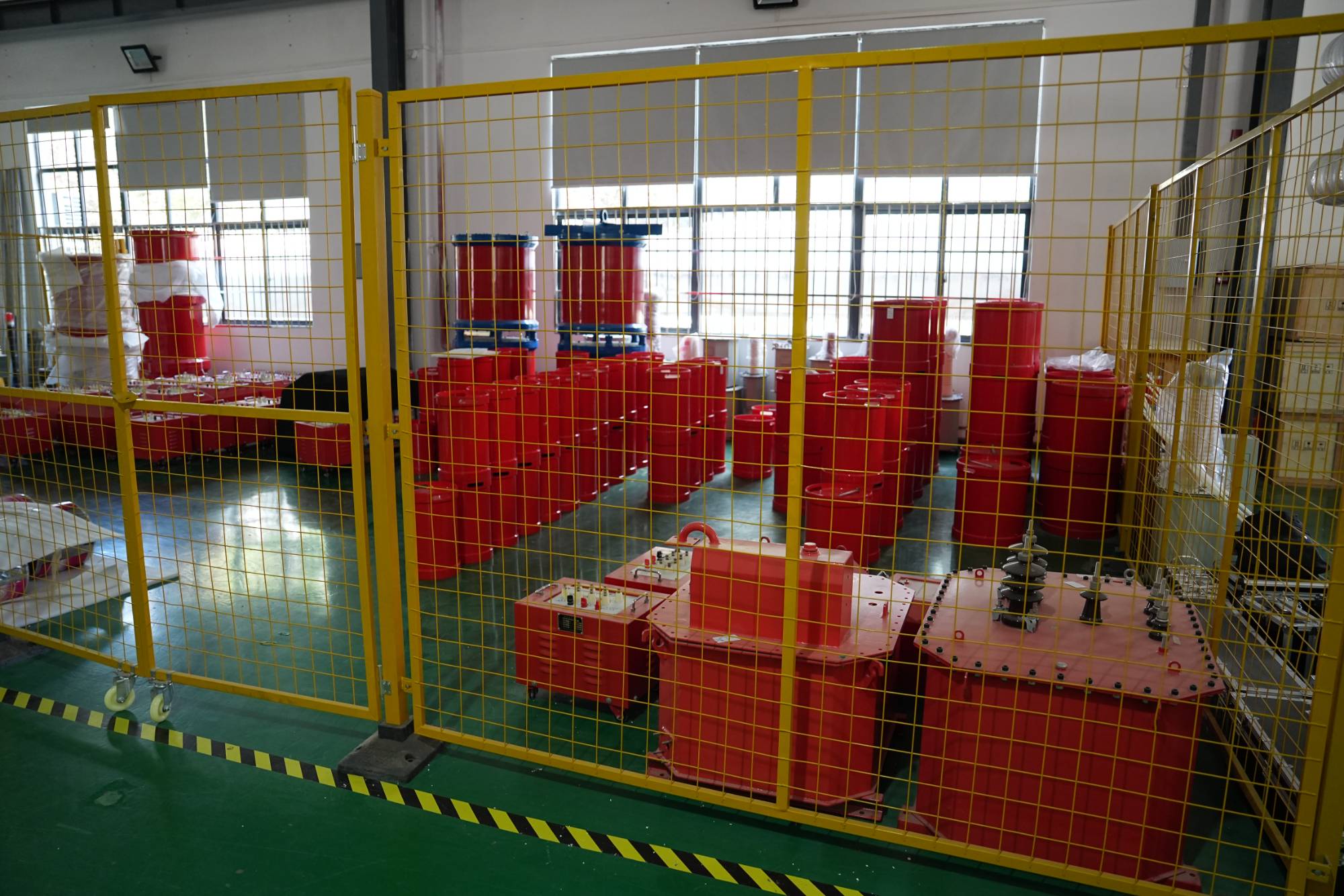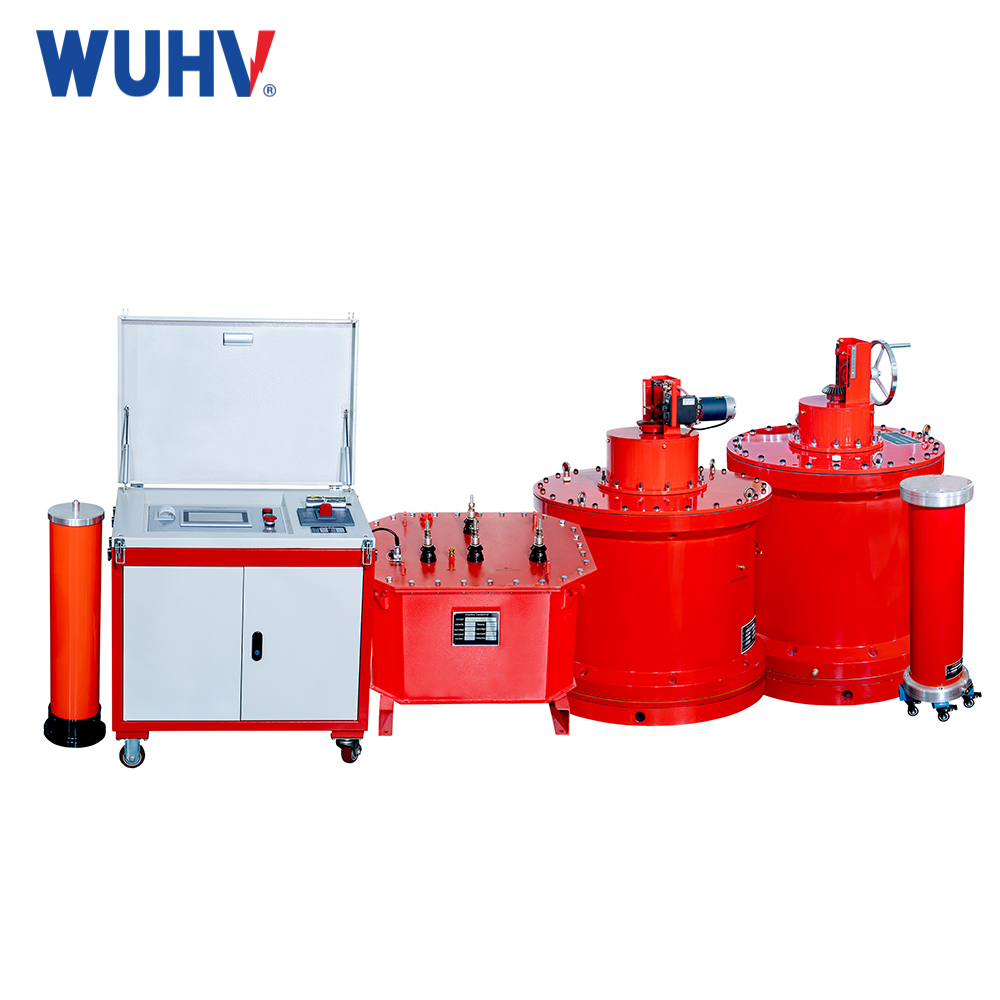When a voltage drop (usually referring to non-complete breakdowns like flashovers or intensified corona on the test object) or a complete breakdown occurs during a test with a series resonance device, its reaction mechanism is a core safety feature of its design.
The device will immediately and automatically activate multiple protections, reacting extremely quickly to ensure the safety of the test object, the device itself, and personnel. The core principle lies in the unique "constant voltage output" and "detuning current limiting" characteristics of the series resonant circuit.

1、Fundamental Principle: Why Can a Series Resonance Device Safely Handle Breakdown?
Before understanding the specific reactions, it's essential to grasp its safety foundation:
1.Constant Voltage Source Output: During the test, the resonance device adjusts the power supply frequency to bring the circuit (exciting transformer, reactor, test object capacitance) into resonance. At this point, the voltage across the reactor (i.e., the high voltage applied to the test object) is Q times (Q is the quality factor) the output voltage of the exciting transformer. The device essentially acts as a "constant voltage source", striving to maintain a stable voltage on the test object at the set value.
2.Breakdown Causes Detuning: When the test object breaks down, its capacitance value changes instantaneously (usually becoming a short circuit, infinite capacitance). The resonance condition is immediately destroyed, and the circuit becomes severely detuned.
3.High Impedance Current Limiting after Detuning: After detuning, the total impedance of the circuit increases sharply, from nearly zero at resonance to the sum of the reactor's inductive reactance and line resistance. According to Ohm's Law (I = U / Z), with the source voltage U remaining largely unchanged, a sharp increase in impedance Z causes the current in the circuit to decrease rapidly.
2、 Specific Reaction Process of the Device during a Voltage Drop or Breakdown
Whether it's a voltage drop (like a flashover) or a complete breakdown, the device's reaction logic is similar, differing only in trigger thresholds and speed.
1. Instantaneous Electrical Response (Microseconds to Milliseconds)
Voltage Collapse: The breakdown of the test object is equivalent to a short circuit, causing the voltage across it to instantly drop to near zero. The device's own measurement system will detect this drastic voltage change.
Current Transient:
For Flashovers (Voltage Drop): The circuit experiences a brief current pulse increase, but due to the detuning effect, the current cannot continue to rise.
For Complete Breakdown: As mentioned, there is first a brief current pulse, followed by a rapid decrease due to detuning.
Loss of Resonance Point: The device's automatic tuning system immediately detects the disappearance of the resonance point, and the frequency lock is lost.
2. Control System Protection Actions (Millisecond Level)
The device's PLC or embedded control system continuously monitors parameters like voltage, current, and frequency. Once any of the following conditions are triggered, it immediately executes protection actions:
Overcurrent Protection: Detects if the circuit current exceeds a preset safety threshold (this threshold is typically much lower than the grid impact current from a test object breakdown).
Flashover Protection: A specially designed algorithm to detect sudden voltage drops (excessive du/dt value). This is the primary protection against flashovers.
Detuning Protection: When the system detects that it can no longer maintain resonance, it judges it as an abnormality.
Zero Position Protection: Ensures the excitation signal returns to zero in case of a fault.
Specific execution of protection actions includes:
Cutting Excitation: Immediately turns off the output of power unit components like IGBTs, reducing the primary voltage of the exciting transformer to zero.
Tripping the Main Circuit: Controls contactors or vacuum circuit breakers to disconnect the device's power input.
Triggering the Grounding Switch: In high-end designs, the device will automatically or prompt the operator to close the grounding switch, ensuring the high-voltage terminal is reliably grounded to prevent injury from residual charge.
3. Human-Machine Interface (HMI) Indication (Second Level)
Emergency Alarm: The touchscreen or indicator lights will emit audible and visual alarms. The screen usually pops up with a prominent fault message, such as "Test Object Breakdown", "Flashover Protection Activated", or "Overcurrent Protection".
Data Logging: The device will record and lock the voltage, current waveforms, and data from the moment just before the fault occurred, facilitating subsequent accident analysis to determine if it was a genuine breakdown or an external flashover.
3、 Subtle Differences Between the Two Scenarios
Voltage Drop (e.g., surface flashover): The voltage drops instantly but not to zero, and may recover afterward. Flashover protection acts sensitively, potentially only cutting excitation without necessarily tripping the main circuit breaker. After resetting the device and confirming the test object shows no abnormal appearance and its insulation has recovered, retesting might be permitted.
Complete Breakdown of Test Object: The voltage collapses to zero and does not recover. All protections will interlock to terminate the test completely. The test object is permanently damaged, and the test ends.
When a voltage drop or breakdown occurs during a test with a series resonance device, its reaction is rapid, layered, and automatic. It cleverly utilizes the physical characteristic of the resonant circuit to naturally limit current after detuning, combined with a fast electronic protection system. This minimizes the impact of the fault, effectively prevents the accident from escalating, and ensures the safety of equipment and personnel. This is a significant safety advantage of series resonance devices compared to traditional test transformers for withstand voltage testing.




















